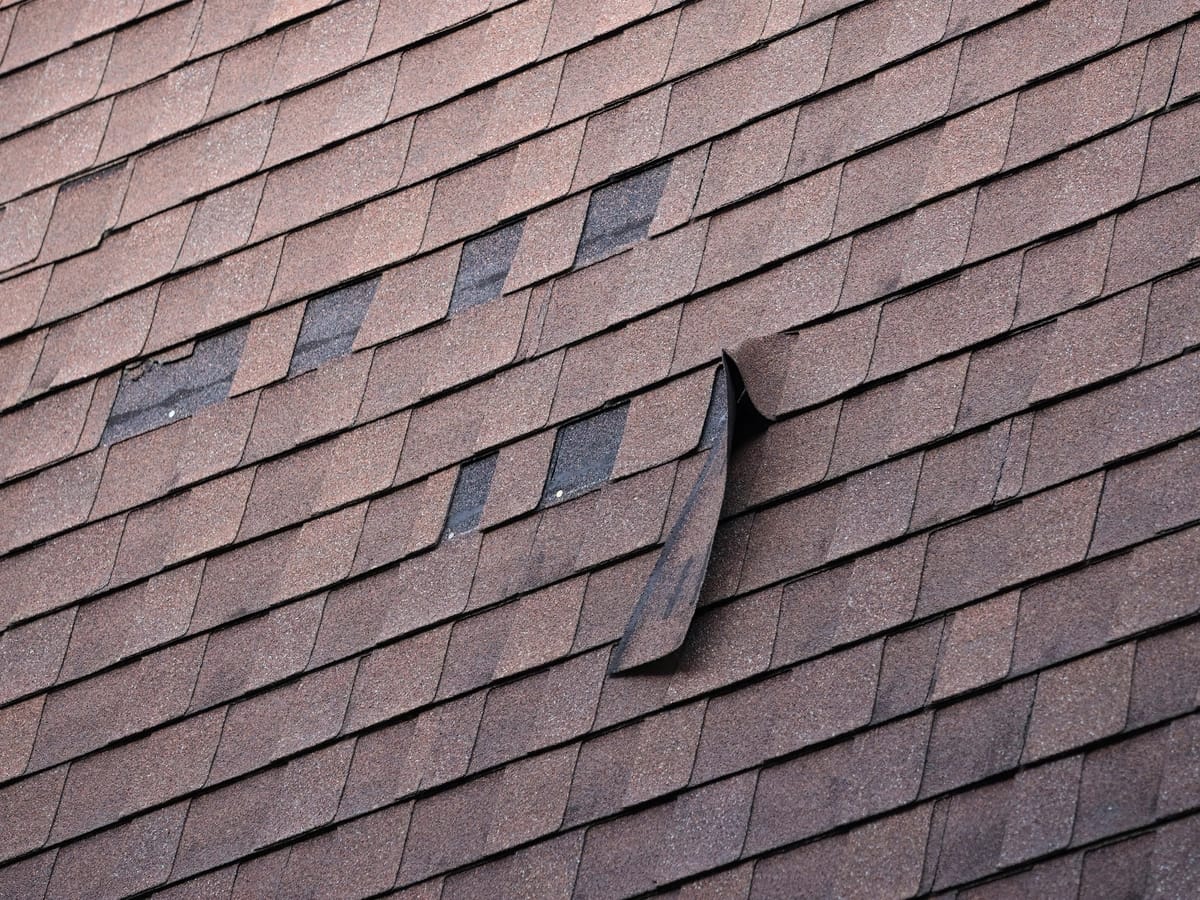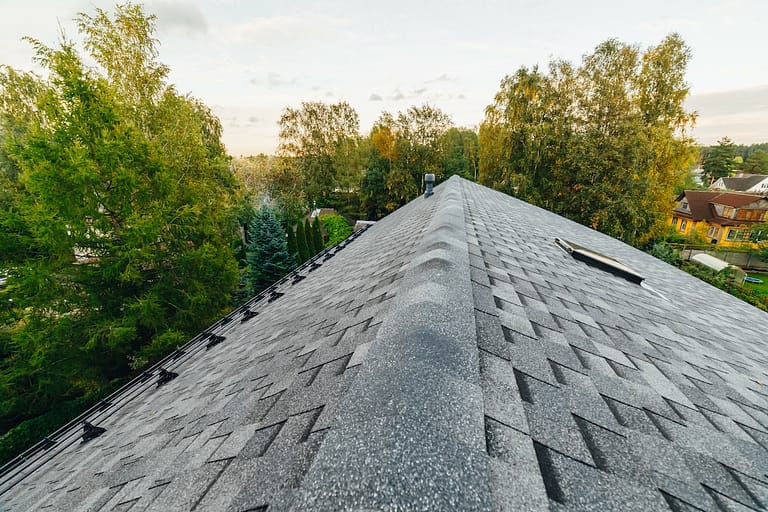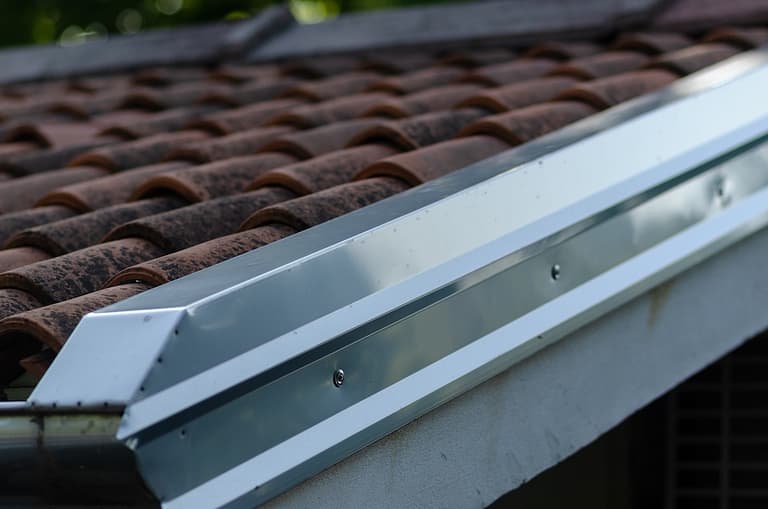Wind might not seem as dangerous as hail or heavy snow, but wind damage to roof structures is one of the most common and costly problems homeowners face. From missing shingles to torn flashing, wind can quietly compromise your roof until a leak or structural issue shows up.
- Common problem: Wind damage is a frequent cause of roof repairs and insurance claims.
- Cost implications: Ignored damage can lead to major water intrusion and higher repair costs.
- Preventive value: Spotting signs early gives you time to act before things escalate.
In this guide, you’ll learn how to spot signs of wind damage, how to fix it, what to expect from insurance coverage, and when to call a pro.
💨 How Wind Damages Your Roof
Wind Speed and Pressure
Wind doesn’t need to reach hurricane strength to cause trouble. Sustained winds over 40 mph can start lifting shingles, especially if they’re aging or poorly installed.
- Uplift pressure: Wind gets under roof edges and pulls upward, loosening nails and adhesives.
- Gust surges: Sudden gusts shift materials abruptly, which may lead to torn or missing shingles.
- Debris strikes: Flying branches or loose items can cause impact damage, puncturing or denting vulnerable areas.
Even newer roofs can experience damage if wind finds a weak point—like loose flashing, compromised sealant, or previously cracked shingles.
⚠️ 5 Signs of Wind Damage to Your Roof
1. Missing or loose shingles
Strong winds can lift shingles and rip them off completely, leaving bare spots or exposed underlayment. This is one of the easiest signs to spot from the ground.
2. Curling, cracking, or buckling shingles
Shingles that lift, bend, or appear warped may no longer protect against water intrusion. These issues often start along ridges and eaves where wind exposure is greatest.
3. Damaged flashing or roof accessories
Flashing around vents, chimneys, or skylights may become loose or bent. Wind may also dislodge drip edge, ridge caps, or satellite mounts, exposing gaps.
4. Interior stains or ceiling discoloration
If wind damage has allowed water to penetrate the roof, you may notice yellow or brown stains on ceilings or upper walls. These are signs of active or past leakage.
5. Granule loss or shingle debris
If you find black shingle granules in gutters or at the base of downspouts, that’s a sign of surface wear caused by wind abrasion. Piles of granules reduce your roof’s UV resistance and shorten shingle life.
🛠️ Should You Repair Wind Damage Yourself?
Deciding between DIY and professional repair comes down to safety, skill level, and the severity of damage.
- Minor repairs: If you’re comfortable and the damage is minimal—such as replacing one or two shingles—you may be able to fix it with proper tools and safety gear.
- Risk of hidden damage: What looks like a few loose shingles may be covering bigger problems beneath.
- Warranty issues: DIY repairs can sometimes void manufacturer warranties or insurance coverage.
- Personal safety: Climbing on a roof—especially a steep one—can be dangerous without the proper equipment.
Best practice: Unless you’re trained and properly equipped, leave roof repairs to experienced professionals.
📋 How to Repair Wind Damage on a Roof
Assess the roof damage
Start with a visual inspection from the ground. Use binoculars or a drone to get a closer look without putting yourself at risk.
Replace missing or damaged shingles
Remove any loose or broken shingles and replace them with matching ones. Nail the new shingle in place and cover fasteners with roofing cement to prevent leaks.
Repair or reseal flashing
Check around chimneys, vents, and valleys for metal flashing that may have lifted or bent. Reseal with roofing cement or replace as needed.
Reinforce weak spots
Use extra nails or adhesive strips to secure shingles in exposed areas like ridges or overhangs. Check ridge caps and ensure they are fastened securely.
Schedule preventive maintenance
Have a roofing contractor inspect your roof annually. Regular maintenance and spot fixes help prevent large-scale wind damage.
🤔 Will Insurance Cover Roof Wind Damage?
Homeowners’ insurance usually covers wind damage if it results from a sudden storm or wind-related event. However, the amount of coverage and the approval process depends on your policy.
- Policy limits: Check for wind-specific coverage caps or regional exclusions.
- Deductible amount: Some policies have higher deductibles for wind or named-storm events.
- Documentation required: Most insurers need dated photos, a contractor’s estimate, and a written claim.
- Roof age matters: Older roofs (over 15 years) may get reduced reimbursement depending on depreciation schedules.
Talk to your insurance provider or agent to understand your specific coverage, and consider scheduling an inspection right after any major wind event.
🏠 Repair vs. Replacement: What’s the Right Move After Wind Damage?
When wind damages your roof, one of the first questions homeowners ask is whether they should repair the damage or replace the entire roof. The right choice depends on several factors, including the extent of the damage, the age of your roof, and your long-term goals.
- Extent of damage: If only a few shingles are missing or a small area is affected, a targeted repair may be all that’s needed. However, widespread shingle loss, significant granule loss, or multiple areas of compromised flashing may call for full replacement.
- Roof age: If your roof is 15 years or older, a replacement might be more cost-effective in the long run. Older shingles are more brittle and may not withstand another round of repairs without further issues. Plus, insurance companies may only reimburse a fraction of replacement costs based on depreciation.
- Structural concerns: Damage that extends to the decking or underlayment often requires a more comprehensive approach. A roofing contractor can assess whether repairs are sufficient or if structural integrity has been compromised.
- Aesthetic match: If your original shingles are discontinued or faded from sun exposure, patch repairs may not blend well. A full replacement ensures a consistent look and improved curb appeal.
- Insurance coverage: If your insurance policy covers wind damage and the cost of a full replacement exceeds your deductible by a significant margin, it may make sense to pursue replacement while your policy helps cover the cost.
Bottom line: A professional inspection is the best way to determine if repairs will buy you time or if a replacement will offer better value and protection.
💵 Understanding the Cost of Wind Damage Repairs
The cost to repair or replace a roof after wind damage can vary significantly based on the size of your home, the materials used, and the severity of the issue.
- Minor damage: Repairs for a few missing shingles or small sections of flashing tend to be more affordable.
- Moderate damage: Larger affected areas, especially those involving leaks or structural concerns, will require more time, labor, and materials.
- Extensive damage: A full roof replacement may be necessary if the wind damage is widespread or if the roof is near the end of its lifespan.
If you’re using homeowners insurance, your final cost typically depends on your deductible and the scope of coverage.
- Deductibles: These can range from a few hundred to a few thousand dollars, depending on your policy.
- Claim value: Your insurer generally covers the remaining cost of approved repairs or replacement beyond your deductible.
- Documentation tip: Accurate photos, inspection reports, and contractor estimates help ensure your claim is properly valued and processed.
Getting multiple estimates from trusted contractors is one of the best ways to understand your options and avoid overpaying—whether you’re paying out of pocket or through insurance.
👉 Factors That Influence Wind Damage Costs
- Roofing materials: Asphalt shingles are cheaper to repair than tile, slate, or metal.
- Roof pitch: Steeper roofs cost more due to added labor and safety requirements.
- Accessibility: Multi-story homes or complex layouts may increase repair time and cost.
- Local rates: Prices vary by region and the availability of roofing contractors.
- Urgency: Emergency repairs or storm response services may carry premium fees.
Getting two or three estimates helps you compare price, scope, and warranty offerings before committing.
🔍 Don’t Let Wind or Storm Damage Go Undetected
Spotting wind damage to roof materials early can mean the difference between a quick repair and a costly replacement. Look for missing shingles, lifted flashing, or interior stains. If something doesn’t look right, don’t hesitate—have it inspected right away.
G. Cannon is here to help you protect your home with honest guidance and reliable repairs. Contact us today for a free estimate and let us restore your roof with care and precision.








